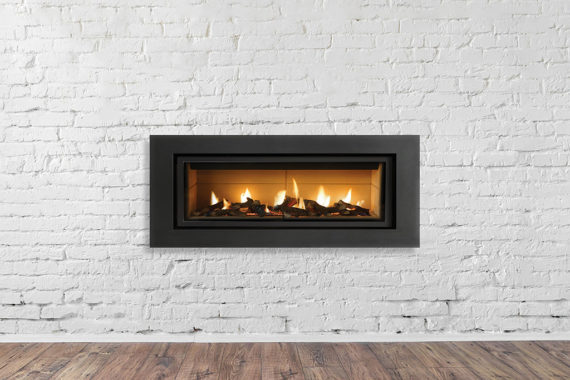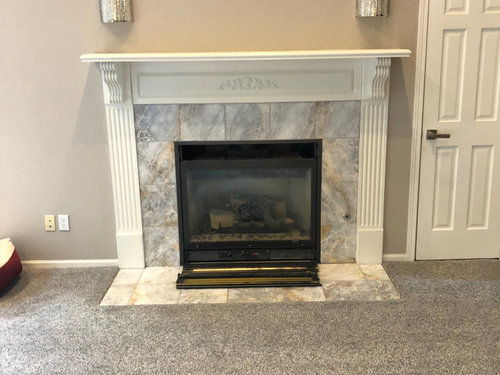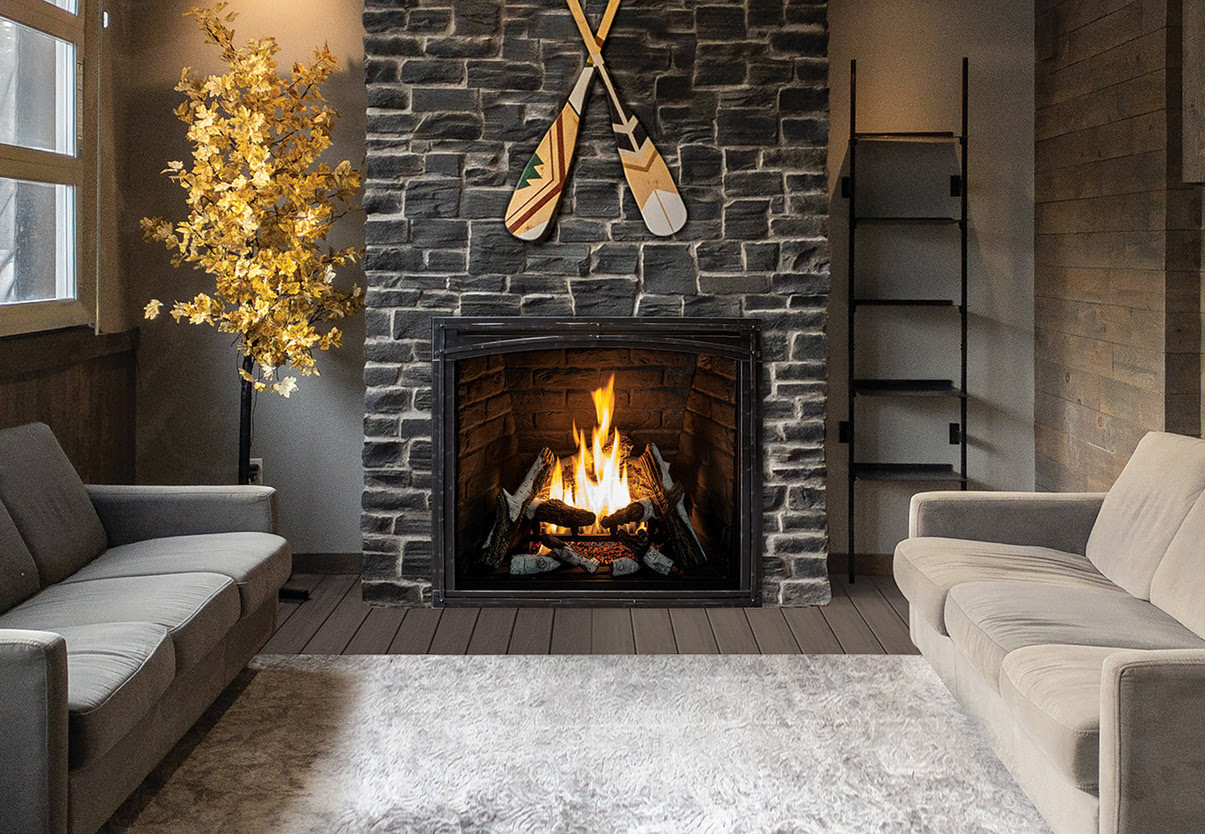Gas fireplaces provide warmth and ambiance, but they can become outdated or unnecessary over time. Removing a gas fireplace can be a complex process involving various factors that influence the overall cost. Today we will talk about the different aspects of gas fireplace removal costs, including planning, demolition, disposal, and post-removal considerations.

Planning and Preparation for Removal
Assessing the Need for Removal
Before deciding to remove a gas fireplace, it’s essential to assess the reasons behind the decision. Common reasons for removal include outdated design, preference for a different heating solution, or repurposing the space. Understanding the need for removal helps in planning the project effectively and budgeting for potential costs. Homeowners should consider whether removal is necessary or if upgrading or refurbishing the fireplace might be a more cost-effective solution.
Evaluating the Complexity of the Project
The complexity of removing a gas fireplace varies based on factors such as the type of fireplace, its integration with the building structure, and the surrounding finishes. Built-in fireplaces may require extensive demolition and reconstruction work, while freestanding units might be easier to remove. Evaluating the project’s complexity involves inspecting the fireplace’s installation, identifying connections to gas lines and ventilation systems, and assessing potential structural implications.
Budgeting for Removal Costs
Budgeting for gas fireplace removal involves considering both direct and indirect costs. Direct costs include demolition, labor, and disposal fees, while indirect costs may encompass repairs and renovations needed after removal. Obtaining quotes from professional contractors can provide a clearer picture of expected expenses. Homeowners should also factor in potential costs for permits and inspections, which may be required depending on local regulations.

Obtaining Necessary Permits
Depending on local building codes and regulations, removing a gas fireplace might require permits. Permits ensure that the removal process complies with safety and structural standards, especially when dealing with gas lines and potential ventilation changes. Consulting with local authorities or a professional contractor can help determine the necessary permits and ensure compliance with regulations, preventing potential legal and safety issues.
Hiring Professional Help
Hiring professional help is often advisable for gas fireplace removal, especially when dealing with gas lines and structural changes. Professional contractors have the expertise to safely disconnect gas connections, perform demolition work, and handle disposal. Choosing a reputable contractor involves checking credentials, reading reviews, and obtaining detailed quotes. Professionals can also assist with obtaining permits and ensuring that the removal process adheres to local codes and standards.
Preparing the Space for Removal
Preparing the space for gas fireplace removal involves clearing the area, protecting surrounding surfaces, and ensuring safe access for workers. Homeowners should remove furniture, decor, and other items from the vicinity to prevent damage during demolition. Protective coverings can help shield floors, walls, and adjacent surfaces from debris and dust. Ensuring a clear and safe workspace facilitates a smoother removal process and minimizes potential damage to the home.

Demolition and Removal Process
Disconnecting Gas Lines
The first step in removing a gas fireplace is disconnecting the gas lines, which should be done by a licensed professional. Proper disconnection involves shutting off the gas supply, safely capping the lines, and ensuring there are no leaks. This step is crucial for safety, as improper handling of gas lines can lead to hazardous conditions. A professional can also provide documentation confirming the safe disconnection of the gas lines, which may be required for inspections or permits.
Removing the Fireplace Unit
Once the gas lines are safely disconnected, the next step is removing the fireplace unit itself. This process varies depending on the type of fireplace and its installation method. Built-in units may require dismantling surrounding structures, such as mantels or enclosures, while freestanding units can often be detached and removed more easily. Careful handling during removal helps prevent damage to surrounding walls, floors, and other structural elements.
Demolition of Surrounding Structures
Demolition of surrounding structures may be necessary if the gas fireplace is integrated into the building’s architecture. This can include removing mantels, hearths, or built-in cabinetry. Demolition should be performed carefully to avoid unnecessary damage to adjacent areas and to prepare the space for any subsequent renovations or repairs. Professionals use specialized tools and techniques to minimize debris and ensure a clean demolition process.

Handling Ventilation Systems
Gas fireplaces often have associated ventilation systems, such as flues or chimneys, which need to be addressed during removal. Properly sealing or removing these ventilation components is essential to prevent drafts, leaks, and structural issues. Depending on the design, this might involve capping chimneys, sealing wall vents, or removing ductwork. Ensuring that ventilation systems are handled correctly is crucial for maintaining the building’s integrity and preventing future issues.
Disposal of Materials
Disposing of materials from the fireplace removal process involves handling various components, including metal parts, glass, and building debris. Proper disposal requires following local regulations for waste management and recycling. Many components of a gas fireplace can be recycled, such as metal frames and glass doors, while other materials may need to be disposed of in designated facilities. Hiring a contractor often includes disposal services, simplifying this aspect for homeowners.
Cleaning and Site Preparation
After the demolition and removal are complete, cleaning the site and preparing it for any future work is essential. This includes removing debris, dust, and any residual materials from the removal process. A thorough cleaning ensures a safe and clean environment for any subsequent renovations or installations. Site preparation may also involve making minor repairs to walls or floors affected by the removal, ensuring a smooth transition to the next phase of the project.

You May Want to Check These Articles:
- Gas Fireplace Not Heating Room
- Gas Fireplace Leak
- Gas Fireplace and Carbon Monoxide
- Gas Fireplace Timer
- Gas Fireplace Types

Post-Removal Considerations
Repairing Structural Damage
Removing a gas fireplace can sometimes result in structural damage that needs to be addressed. This might include repairing holes in walls or floors, patching up drywall, or reinforcing structural elements that were altered during removal. Assessing the extent of damage and planning appropriate repairs is crucial for restoring the integrity of the space. Professional contractors can guide necessary repairs and ensure that they are carried out to a high standard.
Renovating the Space
Post-removal renovations offer an opportunity to repurpose the space formerly occupied by the gas fireplace. This can involve redesigning the area to suit new uses, such as creating additional living space, installing built-in shelving, or adding new design elements. Planning the renovation involves considering the overall aesthetic, functionality, and integration with the existing decor. Professional designers or contractors can assist in developing renovation plans that enhance the space and meet the homeowner’s needs.
Managing Electrical and Plumbing Adjustments
If the gas fireplace removal affects electrical or plumbing systems, adjustments may be necessary. This can include relocating electrical outlets, rerouting wiring, or making changes to plumbing connections. Ensuring that these systems are properly managed and integrated into the new design is essential for functionality and safety. Consulting with electricians or plumbers can help address any necessary adjustments and ensure compliance with building codes.

Reconfiguring HVAC Systems
The removal of a gas fireplace can impact the home’s heating and ventilation systems, requiring reconfiguration of HVAC components. This might involve adjusting ductwork, recalibrating heating zones, or upgrading the system to accommodate the changes in space usage. Proper reconfiguration ensures that the HVAC system continues to operate efficiently and maintains comfortable temperatures throughout the home. Professional HVAC technicians can provide assessments and recommendations for necessary adjustments.
Addressing Aesthetic Considerations
Aesthetic considerations play a significant role in the post-removal phase, as the space previously occupied by the gas fireplace needs to be visually integrated with the rest of the room. This can include selecting new finishes, matching paint colors, or adding decorative elements to enhance the appearance of the space. Achieving a cohesive and appealing look involves careful planning and attention to detail, ensuring that the renovated area complements the overall decor and style of the home.
Preparing for New Installations
If the space is being prepared for new installations, such as a different type of fireplace or an entirely new feature, planning and preparation are essential. This involves ensuring that the space is structurally ready, with appropriate connections and support for the new installation. Coordination with contractors or installers helps facilitate a smooth transition and ensures that the new feature is integrated seamlessly into the space. Proper preparation minimizes disruptions and enhances the overall outcome of the project.

Costs Breakdown
Labor Costs
Labor costs are a significant component of gas fireplace removal, encompassing the work of contractors, demolition crews, and other professionals involved in the process. Labor rates vary based on factors such as location, project complexity, and the contractor’s expertise. Obtaining detailed quotes from multiple contractors can help homeowners understand the range of labor costs and select a provider that offers a balance of quality and affordability. Labor costs typically include the disconnection of gas lines, demolition, and cleanup.
Material Disposal Fees
Material disposal fees cover the cost of removing and disposing of materials from the gas fireplace and associated structures. This includes fees for transporting and disposing of building debris, metal components, and any hazardous materials. Disposal fees vary depending on local regulations and the volume of materials. Some contractors include disposal fees in their overall quote, while others charge separately, so it’s important to clarify this aspect when budgeting for removal.
Permitting and Inspection Costs
Permitting and inspection costs are often necessary for gas fireplace removal, especially when dealing with gas lines and structural changes. Permits ensure that the project complies with local building codes and safety standards. Inspection fees may also be required to verify that the removal and any subsequent work meet regulatory requirements. The cost of permits and inspections varies by location and project scope, and homeowners should budget for these expenses accordingly.
Repair and Renovation Costs
Repair and renovation costs can vary widely depending on the extent of work needed to restore and repurpose the space after removal. This includes costs for materials, labor, and any additional features or finishes desired in the renovated area. Planning for repairs and renovations involves estimating expenses for patching walls, replacing flooring, or installing new design elements. Professional estimates can provide a clearer picture of expected costs and help homeowners plan their budgets effectively.
HVAC and Utility Adjustments
Adjustments to HVAC and utility systems may incur additional costs, particularly if significant reconfiguration is required. This can include fees for HVAC technicians, electricians, and plumbers, as well as the cost of new components or modifications to existing systems. Proper budgeting for these adjustments ensures that all necessary changes are accounted for and that the home’s systems continue to operate efficiently and safely.
Contingency Budget
A contingency budget is advisable for any project involving gas fireplace removal, as unexpected issues can arise that require additional resources. This might include unforeseen structural damage, complications with gas line disconnection, or additional repairs needed after demolition. Setting aside a contingency budget helps homeowners manage unexpected costs without compromising the project’s overall quality and scope. A typical contingency budget might range from 10% to 20% of the total project cost, depending on the complexity and potential risks.

Common Mistakes to Avoid
Underestimating Project Complexity
One of the most common mistakes homeowners make is underestimating the complexity of removing a gas fireplace. The process involves various technical aspects, including gas line disconnection, structural demolition, and potential repairs. Underestimating these complexities can lead to insufficient budgeting, unexpected delays, and complications. Properly assessing the project’s scope and seeking professional advice helps avoid these pitfalls and ensures a smoother removal process.
Skipping Professional Help
Attempting to remove a gas fireplace without professional help can result in safety hazards, improper disconnection, and damage to the home. Gas lines require careful handling by licensed professionals to prevent leaks and ensure safe disconnection. Skipping professional help can also lead to issues with structural integrity and compliance with building codes. Hiring experienced contractors ensures that the removal is conducted safely and meets all regulatory requirements.
Ignoring Permits and Regulations
Ignoring permits and regulations can lead to legal and safety issues, including fines, failed inspections, and potential hazards. Gas fireplace removal often requires permits to ensure compliance with local building codes and safety standards. Failing to obtain the necessary permits or ignoring regulatory requirements can result in complications during and after the removal process. Consulting with local authorities and ensuring proper permitting helps avoid these issues.

Failing to Budget for Repairs
Failing to budget for repairs and renovations after removal can leave homeowners unprepared for the costs of restoring the space. Removing a gas fireplace often involves structural and aesthetic changes that require repairs to walls, floors, and other elements. Not budgeting for these expenses can lead to financial strain and incomplete projects. Planning for repairs and obtaining estimates helps ensure that the project is completed to a high standard.
Neglecting Gas Line Safety
Neglecting gas line safety during removal is a significant risk that can lead to leaks, explosions, and other hazards. Proper disconnection and capping of gas lines are crucial steps that should only be performed by licensed professionals. Neglecting these safety measures can result in severe consequences for both the home and its occupants. Ensuring that gas line safety is a priority throughout the removal process helps prevent these risks.
Overlooking Post-Removal Adjustments
Overlooking post-removal adjustments to HVAC, electrical, and utility systems can impact the home’s functionality and comfort. Removing a gas fireplace often necessitates changes to these systems to accommodate the new space configuration. Failing to address these adjustments can lead to inefficiencies, discomfort, and potential damage. Planning for and managing post-removal adjustments ensures that the home’s systems continue to operate effectively.

How much does it typically cost to remove a gas fireplace?
The cost of removing a gas fireplace typically ranges from $500 to $3,000, depending on factors such as the complexity of the removal, the type of fireplace, and local labor rates. Built-in fireplaces that require extensive demolition and repairs tend to be on the higher end of the cost spectrum, while simpler freestanding units may cost less to remove. Additional expenses for permits, inspections, and post-removal repairs can further influence the overall cost.
Are there any additional costs associated with gas fireplace removal?
Yes, additional costs associated with gas fireplace removal can include permits and inspection fees, material disposal fees, and costs for repairing and renovating the space after removal. Adjustments to HVAC, electrical, or plumbing systems may also incur additional expenses. Homeowners should budget for these potential costs to ensure a comprehensive understanding of the total expense involved in the removal process.
Can I remove a gas fireplace myself to save money?
While homeowners with experience in demolition and construction can remove a gas fireplace themselves, it is generally recommended to hire professionals due to the technical and safety aspects involved. Gas line disconnection, structural demolition, and compliance with building codes require expertise that professionals can provide. Attempting DIY removal without proper knowledge and tools can lead to safety hazards, improper disconnection, and potential damage.
What should I do with the space after removing a gas fireplace?
After removing a gas fireplace, the space can be repurposed for various uses depending on the homeowner’s preferences and needs. Common options include creating additional living space, installing new heating solutions, adding built-in shelving or storage, or redesigning the area for aesthetic enhancements. Planning for the new use of the space involves considering the overall design, functionality, and integration with the existing decor of the home.
How do I find a reliable contractor for gas fireplace removal?
Finding a reliable contractor for gas fireplace removal involves researching and comparing multiple professionals. Homeowners should check the credentials, experience, and reviews of potential contractors. Obtaining detailed quotes and discussing the scope of work can help clarify expectations and costs. Recommendations from friends, family, or local building associations can also assist in finding reputable contractors who can safely and effectively handle the removal process.

The charms of a crackling fire might be tempting, but removing a gas fireplace can be a costly endeavor. From the initial demolition and disposal of the unit to the intricate repairs and potential structural adjustments, the price tag can quickly escalate. This guide explores the factors that influence gas fireplace removal costs, offering insights into what to expect and how to potentially minimize expenses.
Related Posts: